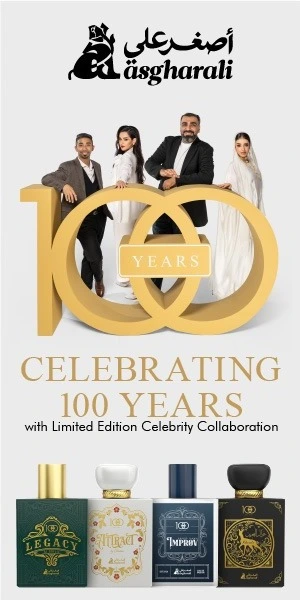How has your Iraqi heritage shaped your identity as an artist, and what cultural elements continue to inspire your creative process in London?
I first studied archaeology at the College of Arts at Baghdad University and later worked for years in the Department of Antiquities. This provided me with ancient references that helped to define my artistic identity, as I belonged to a generation influenced by our predecessors’ call, specifically the Baghdad Group of Modern Art, to develop a uniquely Iraqi artistic style. My use of Mesopotamian and folkloric motifs reflected that call, though I was actually more inclined toward the idea of Arab art due to my reading of Arabic literature and its various legends. My acquaintance with The Epic of Gilgamesh during my studies instilled in me a love of storytelling, as well as the culture of myths, legends, and poetic texts in general. In the late 1960s, I produced a large and varied collection of drawings about this epic, some of which were published at the time in Al Amiloon Fil Naft, the oil workers’ magazine edited by Jabra Ibrahim Jabra.
Can you share specific instances where your upbringing in Iraq influenced your artistic vision and sparked particular ideas or projects you’ve pursued?
I was born in the Al-Fadl district, one of the neighborhoods of old Baghdad, where I attended my first school. For secondary school, I went to the Central School, and the availability of a dedicated art studio with an art teacher marked a turning point for me, especially as I transitioned from copying pictures from magazines to drawing what was around me using watercolors. In my first year at the College of Arts, I joined the college’s studio, supervised by the artist Hafidh Druby, which strengthened my academic knowledge of painting. In my second year, I joined evening classes at the Institute of Fine Arts to study drawing in the studio of the artist Faiq Hassan. Together, these opportunities shaped my artistic path, further reinforced when I joined the Iraqi Impressionists’ Group, founded by Hafidh Druby. In the mid-1960s, I continued working on themes drawn from Mesopotamian archaeology (as mentioned before), but my Gilgamesh drawings also motivated me to explore other subjects related to everyday Iraqi life, popular culture, Islamic history, and Arabic literature, including the martyrdom of Hussein, Arabian Nights, and various Sufi texts.
What motivated you to create a collection focused on the Palestinian struggle, and how do you hope it contributes to the broader conversation around this issue?
Since my youth, I have been deeply connected to the Palestinian cause, which has stayed with me to this day. Perhaps the repeated defeats are a key factor in my pursuit of this subject, which I view as a humanitarian act against injustice. Since the 1970s, I have aimed to document the suffering of the Palestinian people through work that exposes the falsehood of a world ruled by hypocrisy and hollow claims.
Can you describe one or two specific pieces from this collection that resonate deeply with you, conveying powerful messages about the Palestinian experience?
After Black September, I created a collection of drawings based on a fictionalized account of a fedayee, published as A Witness of Our Times (1972). This was followed by Land of Sad Oranges, a series published by the Ghassan Kanafani Commemoration Committee after Kanafani’s assassination (1973). In 1976, I produced The Body’s Anthem, which documented the Tell al-Zaatar massacre, accompanied by poems about the massacre by three Arab poets: Mahmoud Darwish, Youssef al-Sayigh, and Taher Ben Jelloun. Following the Sabra and Shatila massacre, I created We Are Not Seen, But as Corpses (1983), a set of etchings published by the Sabra and Shatila Society, alongside an eyewitness account of the massacre’s aftermath by the French writer Jean Genet. This series of etchings followed Sabra and Shatila Massacre (1982–83), my monumental work on paper mounted on canvas about this event, now part of the Tate’s collection.
How do you anticipate viewers will respond to your artwork addressing the Palestinian struggle, and what emotions or thoughts do you hope it evokes?
Once, I was visiting the Tate with a friend while Sabra and Shatila Massacre was on display. A security guard in the gallery where the painting was exhibited approached me, saying it was a piece that often stopped passersby, perhaps because it evokes an intense humanitarian response. In the early 1980s, when the etchings about the massacre were first exhibited in a gallery in Golders Green, an area of London with a predominantly Jewish population, there was a long queue of visitors eager to see these works that reflected the spirit of brutal revenge on defenseless people. Unlike gratuitous depictions of horror, I strive for a creative response that speaks of the universal suffering of humanity on a global scale.
Looking ahead, do you plan to explore additional themes related to heritage or identity in future projects?
Since the early 1990s, I have been preoccupied with the social and political challenges facing Iraq and neighboring countries. The catastrophe of the Kuwaiti occupation led to the destruction of social relations and created political divides across the Arab world, including within Iraq. This societal fragmentation worsened with years of sanctions, mass emigration, and the search for safety. These events inspired me to create a series titled Land of Darkness (1991 to present), where I portray the tragedy of Iraq today in contrast to its historic epithet, Sawad (meaning ‘darkness’), which once described the south of Iraq as a fertile land of wealth and abundance. Since 2003, Iraq’s situation has deteriorated with the arrival of a vengeful regime obsessed with sectarianism, leading society into cycles of ignorance, superstition, and plundering cultural and natural resources. These transformations in my homeland compel me to continue creating works that document and expose those who seek to tear society apart.






























































